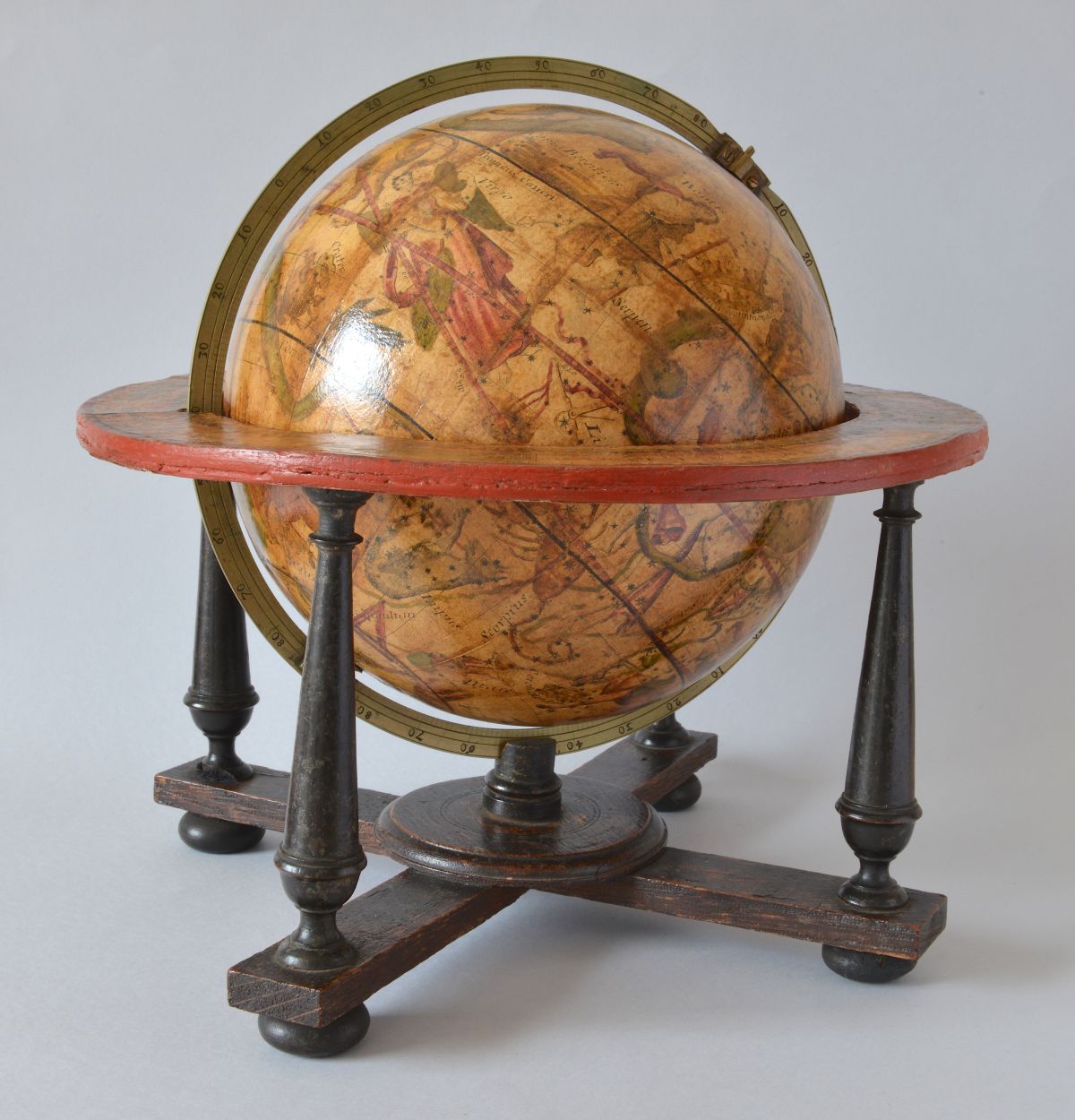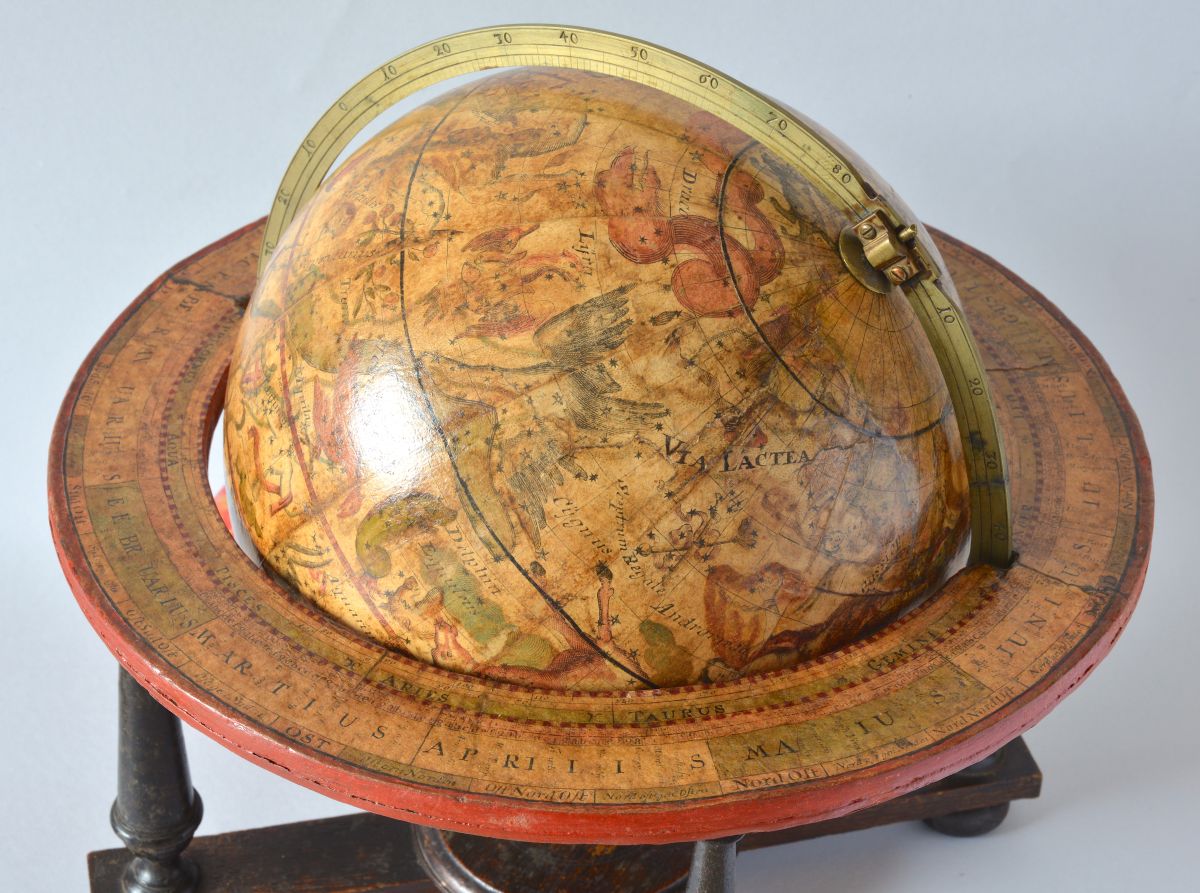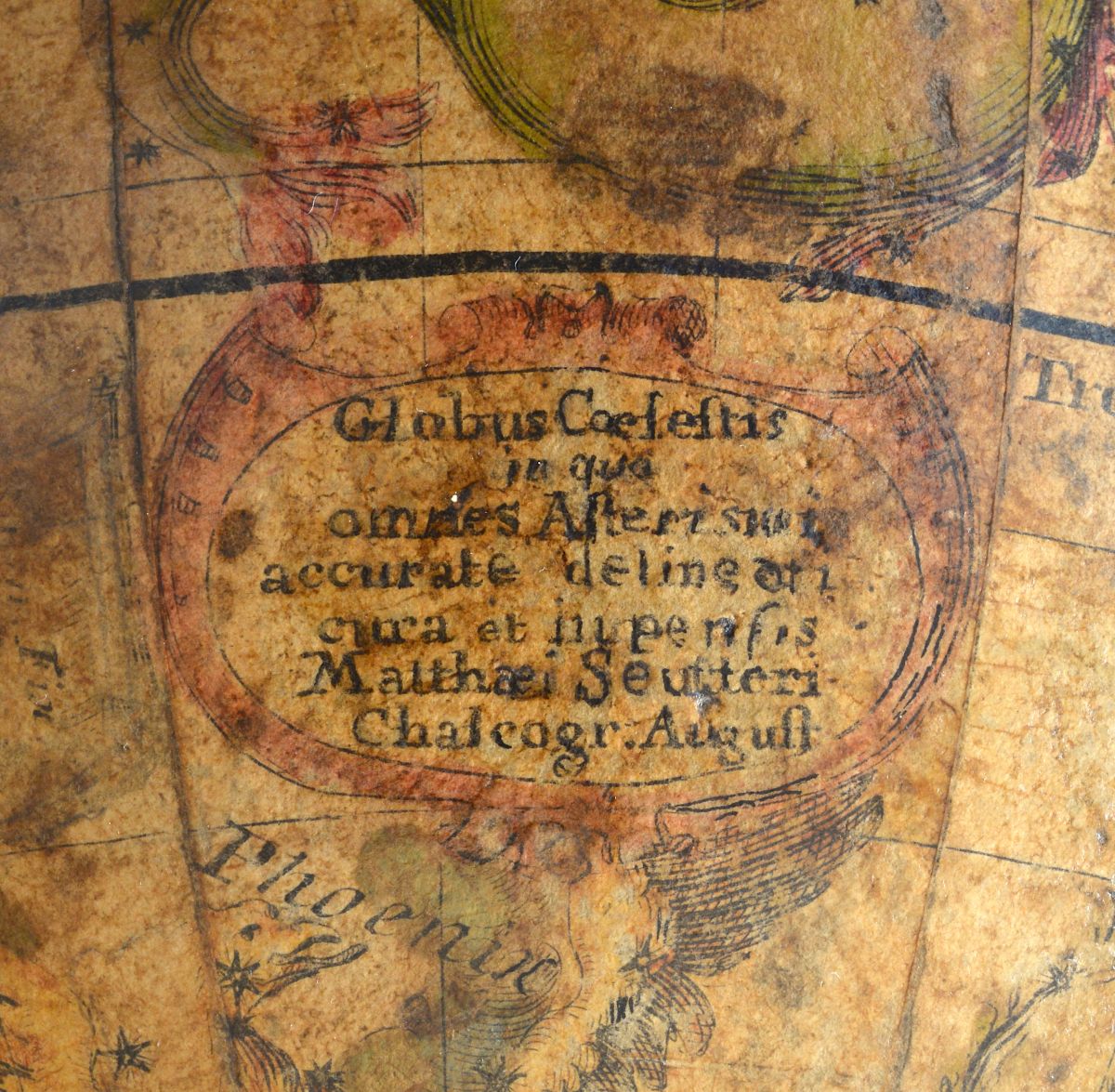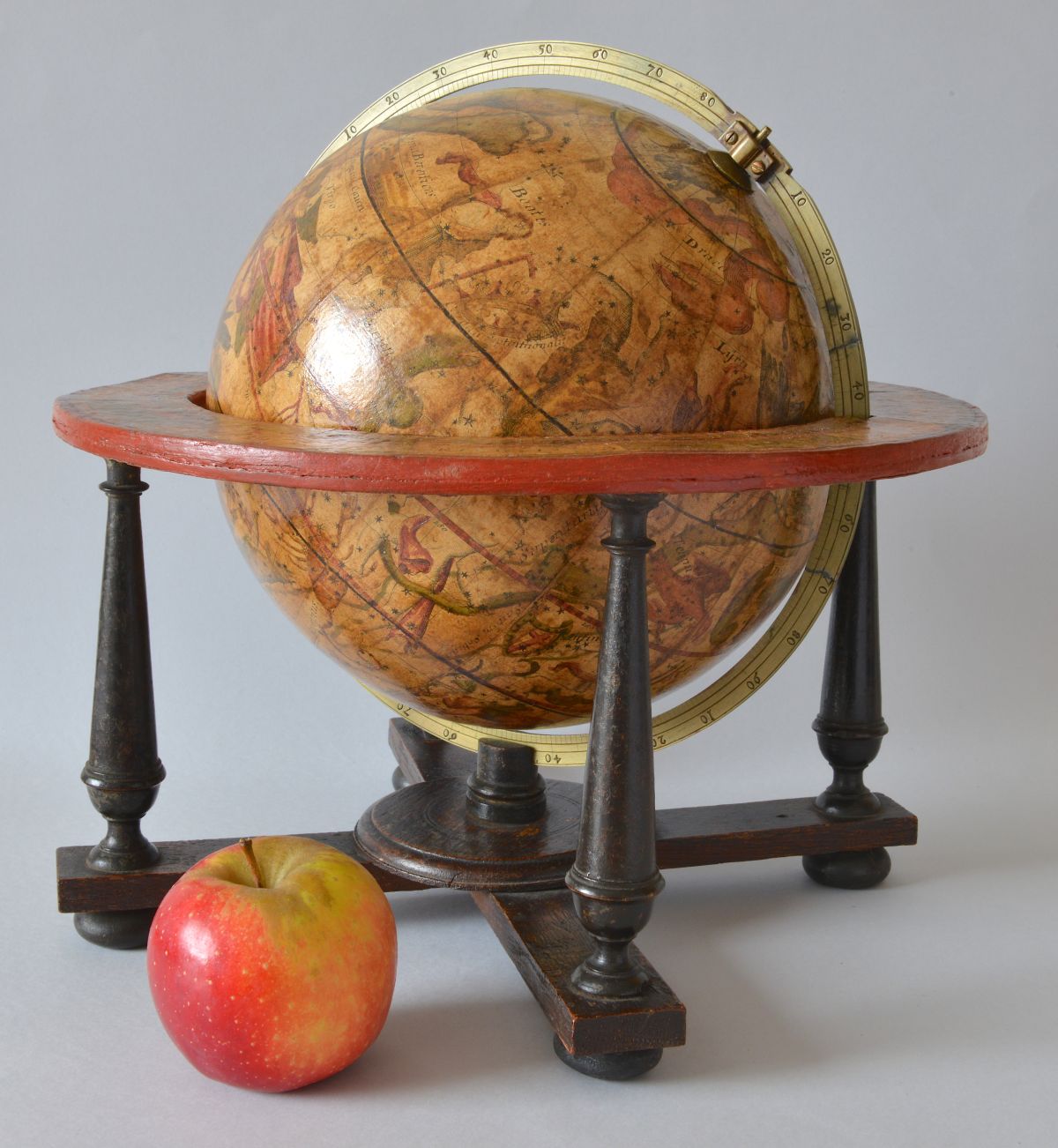A plaster library celestial globe covered of watercoloured paper gores, inside a brass meridian circle in its support formed by an equatorial table resting on four feet.
The globe consists of twelve glued and watercoloured gores bearing Ptolemaic constellations with their names and the main stars. There are also the main circles: Equator and Ecliptic in red and divided into degrees, the two Tropics and the two polar circles in black.
In the southern hemisphere there is a cartouche signed: "Globus Coeslestis in quo omnes Alterismi accurate delineati cura et m.pensis Matthaei Seutteri Chalcogr. August".
The brass meridian circle is graduated four times from 0 to 90 degrees and divided into degrees.
The equatorial table made of cardboard covered with watercolour paper bearing a calendar and the Zodiac as well as the 32 cardinal points. The graduated calendar from January to December in Latin with the days of each month. The graduated zodiac calendar of the twelve signs of the Zodiac in Latin and subdivided into 10 degrees each.
On its stand formed by four baluster feet in turned and stained wood linked together at the base with a wooden disc in the centre forming a support for the globe.
Literature: Matthäus Seutter (1678/1757) was an 18th century German map publisher, in 1732 Seutter was honored by German Emperor Charles VI with the title of "Imperial Geographer".
Dimensions: height of 29 cm x diameter of 29.5 cm (total) x 20.5 cm (globe / 8 inches).
Augsburg circa 1710.
Reference : SARL 82
Price and additional photos on request.





